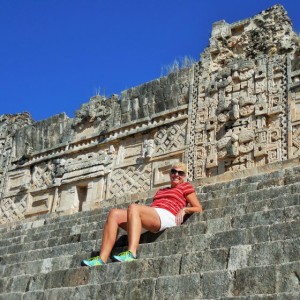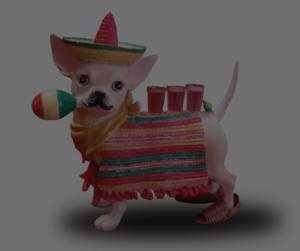
January 28, 2016 – We had a truly wonderful visit to Campeche and our stay in the campground equally superb. Our walk on the Malecon was windy but warm as was our walk in the historic downtown core. Shortly after arriving in the Zocalo we jumped on an open trolley bus to see the sights, well worth the $100 pesos per person. They have done such a terrific job over the past 300 years preserving and enhancing the core of the original city surrounded by portions of the old Spanish fortress wall. After returning to the campground (EcoVilla Resort) everyone went for a dip in the pool and spent some quality time either having a siesta, on the internet or both. Later at 5 pm we picked up our laundry and later dropped into a grocery store for a few items.
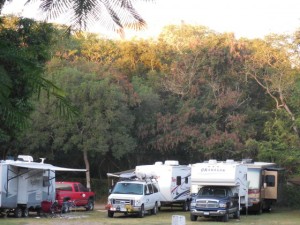
We returned the next day, Saturday, to the Mercado with everything you can imagine for sale. For those that have never been to such a Mexican Market it was very different than anything they had really ever experienced before. The place was packed with locals, not many tourists and sales were certainly brisk. Roland and Janice were feeling under the weather the last couple of days but the came with us and we drove around some more downtown and scouted out the Marganzo Restaurant for a return later in the evening.
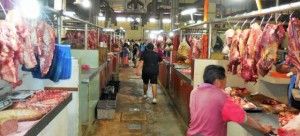
We returned for dinner at 6 pm, parking was easy to find and it occurred to us that all the parking was free, we did not see any paid public parking anywhere, interesting for sure. At Marganzo’s was good and not too pricy given the location, a block away from the main square. As luck would have it after dinner we strolled back to the Zocalo and found out we were right on schedule for the Saturday night Campeche Light Show presentation. The show portrayed the history of Mexico and Campeche on the front of the Municipal Palace, spectacular is the only word that can describe this show, wow!
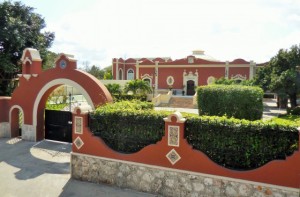
The next stop was the Mayan Archeological Site Uxmal, founded about 500 AD, this was still in use when Cortez arrived in 1518. This was a wonderful Sunday drive lead by Grant & Anita, on a very quiet Hwy 261where we were passed by only one bus on a good road. Once we crossed over into the state of Yucatan the road got even better, sometimes a little narrow but us Baja drivers are used to narrow roads. We arrived at Uxmal just after noon and parking on a field on the right of the entrance, $131 pesos per RV per night including internet, another $50 pesos you could use the pool, cannot complain about that. After lunch we headed over to across the highway to a Chocolate Museo as coco beans were highly valued and traded in the Mayan world. That evening we attended the Uxmal light show, very loud, 100 % Spanish, only coloured lights, it was somewhat disappointing compared to what we had seen in Campeche.
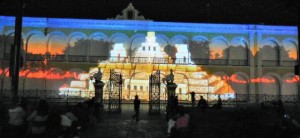
Day 2 at Uxmal we started at 8 am for a tour of the Mayan site with Pedro as our guide. $200 pesos and 2 hours later we were much more informed about this Mayan civilization and the general history of the Mayan culture. Pedro was an excellent guide and I would recommend him to anyone. Later the gals decided to make it a poolside afternoon and they had fun for sure. A few of the guys joined them later, had a couple of beers and even some margaritas were consumed. Before dinner Ricardo the site guide manager dropped by for some conversation about Mexico and the region. A few of us went for dinner at the hotel restaurant, a little pricey but what else would you expect at a tourist location like this.

The gang was up and ready to go the following day at the crack of 9 am headed to Merida, the capital city of the Yucatan State. Grant & Anita leading the caravan again for this leg of the journey. Some great scenery on the way for this short drive to the Rainbow RV Park on the east side of Merida. We found the park easy enough, later we even found the entrance. $250 per RV which included water, power, sewer, clean washrooms and showers that included resident iguanas. Good WiFi was available at the high end Liverpool Mall next door with an ice rink (really).
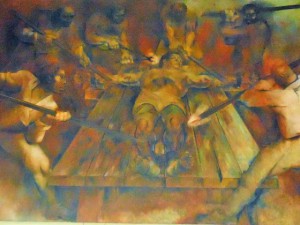
After we got settled in on the large campground (had to be 50 sites plus) we headed out to do some shopping and banking, which included the Liverpool Mall, Costco and Mega. We also made arrangements for a city bus tour (double decker with an open air seating) the next day. We headed downtown for a 9am pickup at the Holiday Inn and with help from our GPS Molly we even found it. We believed there were a few stops, not really the case, only one, the Zocalo. This is where we all dropped off and spent almost 2 hours seeing the sites in this 6 square blocks, so much to see. Lots of walking and photo taking, also pricing items and as expected very expensive so close to the historic heart of the city. We met back up with the bus after 11 am and arrived back at the Holiday Inn where we started around noon. We did see and enjoy much of downtown Merida from our vantage point in the upper seats of this bus, only $100 pesos per person. Later after we returned to the campground the guys headed out to refill bottles with purified water.

Today folks are mostly taking a day off, the weather is changing, a little cooler and not so much humidity. Good time to send the blog from the mall. A few of us are heading down the road this afternoon to visit the Museo de Mayan Anthropology, this should be good. Tomorrow all our Baja Amigos are off to Celestun with Roland & Janice in the lead, located on the west from Merida on the Gulf Coast in the Parque Natural del Flamigo to take a tour of surroundings and see these birds.

Did you know?
San Francisco de Campeche (pronounced: [san fɾanˈsisko de kamˈpetʃe]) (Ahk’ìin Pech – /aχkʼiːn˥˧ pʰetʃ/ in Yucatec Maya) is a city in one of the 11 municipalities (also named Campeche) in the state of Campeche, located at 19.85°N 90.53°W, on the shore of the Bay of Campeche of the Gulf of Mexico. The municipal seat also serves as the state’s capital city. The city’s population at the 2010 census was 220,389, and the municipality for which it serves as municipal seat had a population of 259,005. The city was founded in 1540 by Spanish conquistadores as San Francisco de Campeche atop the pre-existing Maya city of Can Pech. The Pre-Columbian city was described as having 3,000 houses and various monuments, of which little trace remains.
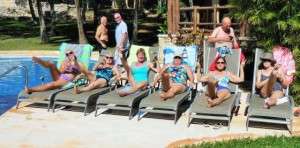
The city retains many of the old colonial Spanish city walls and fortifications which protected the city (not always successfully) from pirates and buccaneers. The state of preservation and quality of its architecture earned it the status of a UNESCO World Heritage Site in 1999. Originally, the Spaniards lived inside the walled city, while the natives lived in the surrounding barrios of San Francisco, Guadalupe and San Román. These barrios still retain their original churches; the one in Guadalupe is almost 500 years old.

City fortifications
The city of Campeche is an example of urbanism in a baroque colonial city, with a reticular and regular plan, its urban trace, a model of colonial port cities, reflects the main role that it played as a commercial, religious and military connection point characterized by its high level of integrity and homogeneity. More than one thousand buildings with a historic value have survived as witnesses of space and temporal superimposition of several significant historic periods of Mexico.

Due to the constant attacks of both English and Dutch buccaneers and pirates such as Francis Drake, John Hawkins, Laurens de Graaf, Cornelis Jol, Jacobo Jackson, Jean Lafitte, Francisco de Grammont, Bartolomé Portugués, William Parker, Francisco Nau, Edward Mansvelt, Henry Morgan, Lewis Scot, Roche Braziliano and Michel de Grammont for almost 160 years, in 1686 the government started to fortify the city. The French engineer Louis Bouchard de Becour was commissioned to unify all the defensive works that surrounded the city with a wall. At its completion, the wall surrounding the city of Campeche was 2,560 meters in length, forming an irregular hexagon around the main part of the city, with eight defensive bastions on the corners.
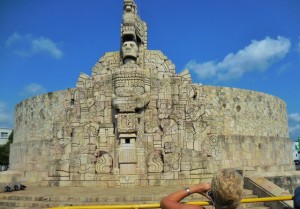
These bulwarks now serve different functions:
- Santiago: Used as the Botanical Garden ‘Xmuch´haltún’. Reconstructed.
- San Pedro: Former prison.
- San Francisco: Protects the Land Gate. Houses the library of the INAH.
- San Juan: Protects the Land Gate.
- Nuestra Señora de la Soledad: Also protects the Sea Gate. It is the largest one and holds the Museum of City History.
- San Carlos: Holds the City Museum. This fort was the first one built. Protects the Sea Gate.
- Santa Rosa.
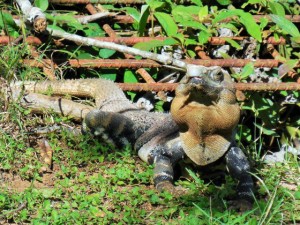
It also contained four gates to allow access to the main quarters. The main entrances are the Puerta de la tierra (“Land Gate”), built in 1732, and the Puerta del mar (“Sea Gate”). The Land Gate is kept as a tourist attraction, having a light and sound show three nights each week and keeping original supplies and items from the 17th century. The other gates were Guadalupe and San Román, connecting to the outside neighborhoods.
Additionally, two main forts protected the city from two nearby hills on each side, the forts of San José el Alto (built in 1762) and San Miguel. These forts gave long-range artillery coverage and served also as look-outs. They were built before the walls of the city. The fort of San Miguel is used as a museum and houses a collection of pre-Hispanic items. The fort of San José houses a collection of boats and weapons of the period.
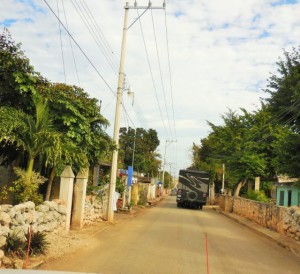
History
Founded in 1540 by Francisco Montejo, Campeche was terrorized by pirates and marauders until the city started fortification in 1686. San Francisco de Campeche was originally a village, Ah Kim Pech, where the first landed in Mexico in 1517. The city of Campeche was founded in 1541 and fortified against pirates during the 17th century. It still has the appearance of a fortress. Historical monuments and buildings, such as the Franciscan cathedral, old Maya ruins, and the old city walls and forts, attract many tourists.

The fortifications system of Campeche, an eminent example of the military architecture of the 17th and 18th centuries, is part of an overall defensive system set up by the Spanish to protect the ports on the Caribbean Sea from pirate attacks like the 1663 Sack of Campeche. The state of preservation and quality of its architecture earned it the status of a World Heritage Site in 1999.
